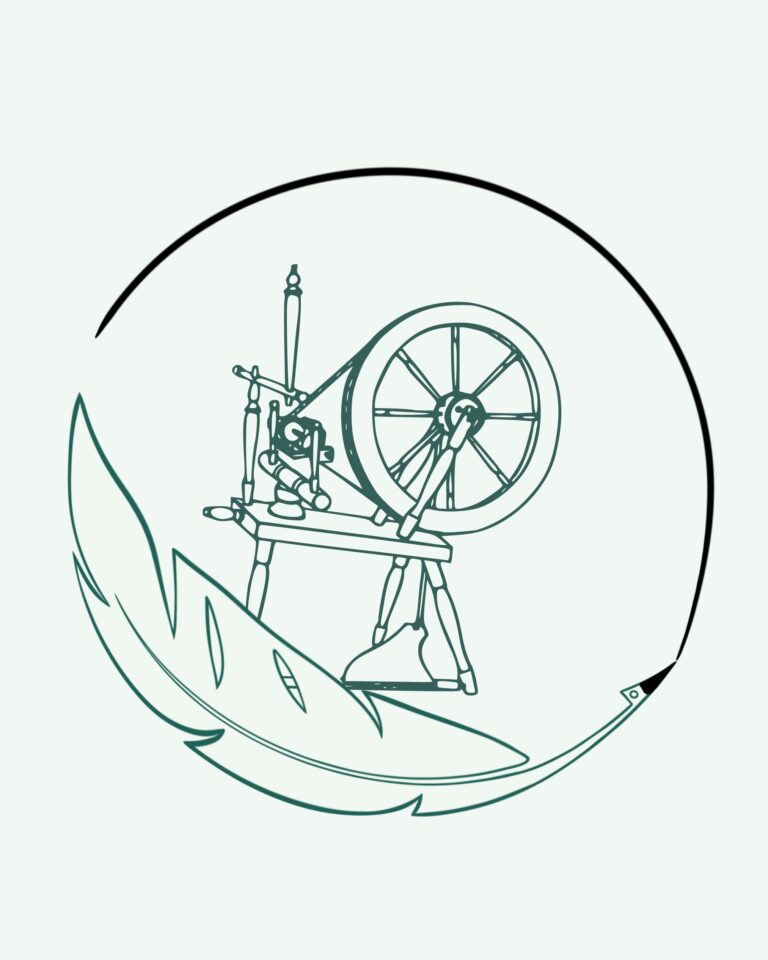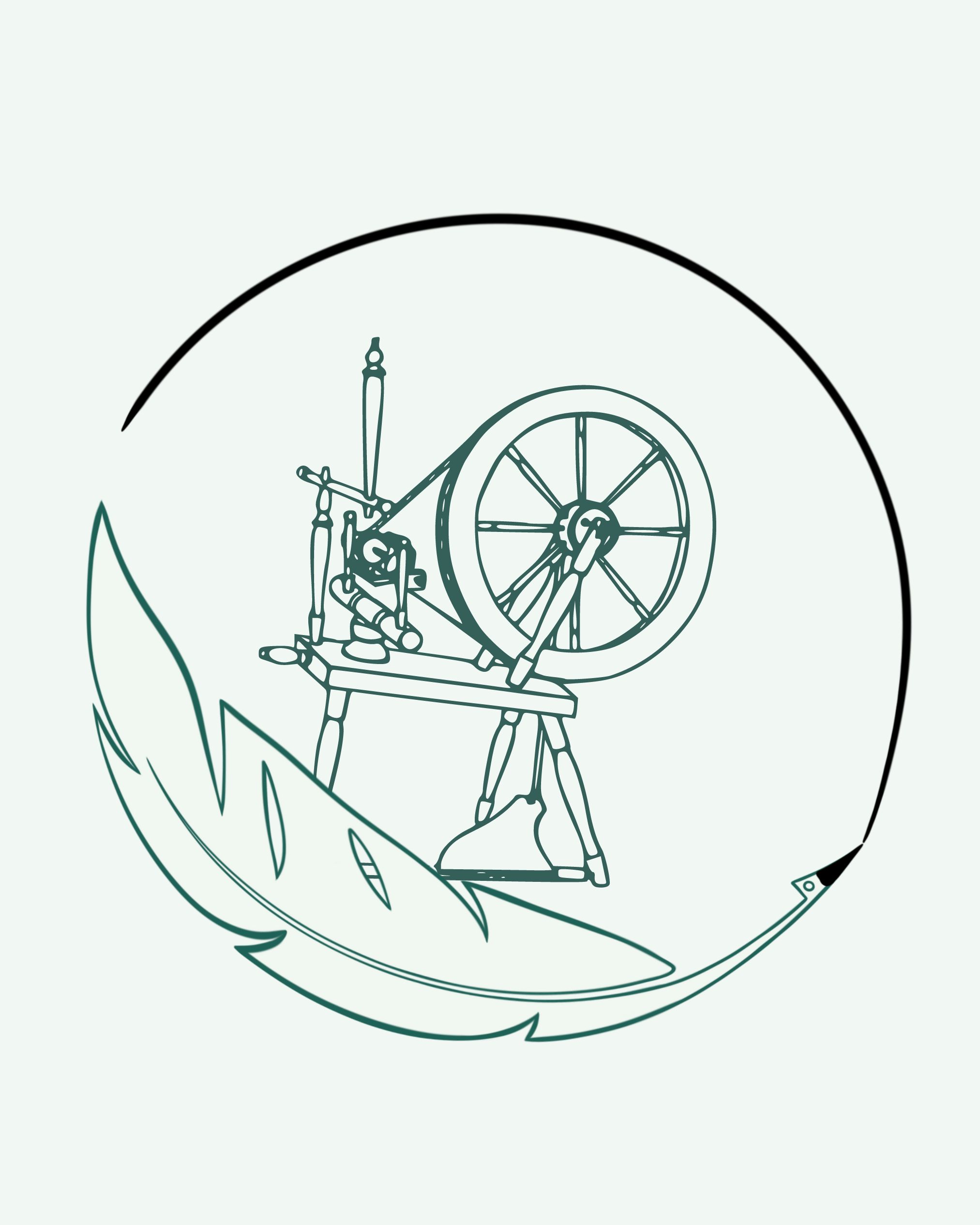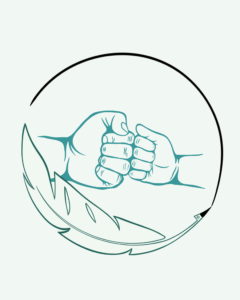Covering, which started with the existence of human beings, was basically a need for protection from external factors. However, this need has changed over time and has become a reflection of identity indicating social status. Clothing made from animal skins was used during the ice ages.
Textile Before the Industrial Revolution
Tanning was used to make these animal skins wearable and to soften them a bit. After the invention of the needle, animal skins began to be shaped to fit the body and turned into clothing.
Ancient Assyrian, Greek, Egyptian and Roman clothes consisted of pieces of fabric wrapped around the body and fastened with a needle called a fibula. Due to the technical characteristics of weaving, the fabrics were in the form of shawls and were positioned by wrapping around the body. While wool, linen and silk were used in Assyria, the Egyptians thought that the wool was not clean and was content with linen. In this period, when the clothing hierarchy was evident, only the upper strata of the society were dressed as we know them today, while the slave class lived almost naked. Forms created with animal skins and clothes made of rectangular woven fabric have revealed the fashion phenomenon. Although people who used to produce fabrics using natural raw materials at first made production using various techniques, the industrial development of clothing and the period in which clothing and fashion gained momentum after the industrial revolution.
Textile After the Industrial Revolution
The industrial revolution at the beginning of the 19th century is seen as the beginning of fast fashion. The development of steam machines with the industrial revolution has alleviated the human burden in textile production. Hand-spinned yarns and hand-woven looms have been replaced by machines. With the invention of the sewing machine, the fashion industry has gained a new dimension. Clothing, which was seen as a craft product, has now begun to be seen as an industrial product. As fashion developed in the West as a result of the creative and industrial processes in the 19th century, the magazines in which the information and visuals of the fashion were printed had a wide distribution network and accelerated the perception of design and change. With the advances in the production and distribution of textile products and the development of transportation, access to large stores has become easier and this situation has increased consumption.
Textile, which includes weaving and knitting methods, covers the whole process from fiber to yarn, from fabric to clothing. It interacts with many disciplines such as arts and crafts, technological developments, social events, economy and politics. At the beginning of the 19th century, fashion/clothing, which was mostly handcrafted before the industrial revolution, evolved into ready-made clothing after the industrial revolution. The fabric and clothing production process has been shortened. After this period, socio-economic and cultural changes have been experienced with rapid mechanization. Industrialization has shown its effect first in Europe and then all over the world.
The developments in Europe and the fact that men went to the front due to World War I changed the role of women in society. In daily life, women have started to do the tasks undertaken by men. In order to be able to do these jobs easily, women changed their clothes and started to use shorter skirts and more functional clothes. Thus, puffy skirts and corsets lost their validity and simple forms dominated women’s clothing. In addition, the tailors of the period developed new methods to meet the uniform needs of the army during the war. This mode of production coincides with the production of ready-made clothing.
The industrial revolution first started in England in the 19th century and then spread to other European countries. It is a revolution that affects the whole world and many sectors. Steam power began to be used in industry and machines took the place of the tool. In a way, industry existed before the revolution as well. For example, manufacturers traders make weaving in their homes and take orders. The development of machines and the rise in costs have made it difficult for individual workers to own these machines and take orders from home. With the use of steam, there was a need to gather these machines under one roof. In line with this need, the first factory examples began to be seen.
The first important discovery made in the weaving industry was the rapid-fire shuttle. Wider looms began to be used as a result of the English John Kay’s development of the rapid-fire shuttle in 1733. Previously, shuttle looms could weave fabrics as wide as the arm could reach, but with Kay’s invention, manual throwing of the shuttle was eliminated, and the efficiency of weaving was increased by going from one end to the other with the help of a tool resembling a wedge between the length yarns of the shuttle. In 1745, the world’s first fully automatic loom was developed by Jacques De Vaucanson. This bench, which works with water power, was not adopted at that time and could not be used efficiently.
With the invention of the first known functional weaving machine, the Spinning Jenny, in 1764 by James Hargreaves, there have been significant developments in the field of weaving. Thanks to these developments in the weaving industry, significant savings have been achieved in the workforce. There has been an increase in the speed of doing business and the amount of production. The use of modern and technically advanced machines in factories became widespread in a short time. The number of shuttle looms used in factories in England in 1813 is 2400. This number reached 80 thousand in 1831 and 116 thousand in 1856. On the other hand, the number of hand looms used in England decreased from 200 thousand to 40 thousand. All developments have led to the formation of a new social space. A new area was created in the factories needed for working individuals and the use of machines, and the workers started to work as a community. As a sociological development, there was a migration towards the regions where the factories were located at that time.
The workers who will work in these factories have both entered into a social innovation and affected the environment in the factory areas. People working together have formed a new social class and interacted. Factory environments have evolved over time. However, these social changes took time, of course. On the one hand, while the factory was continuing, on the other hand, traditional production methods were still continuing. The last wood-fired oven in England was put out in 1809. In France, new production methods and traditional production methods were producing together. Cotton was spun in factories and woven at home by contract labor.
One of the important developments in the textile industry is the invention of the sewing machine. The development process of the sewing machine began in 1755 when Charles Weisenthal received a patent for the needle to be used in the sewing machine. However, the invention of the first functional sewing machine was developed by Barthelemy Thimonnier in 1830. The machine invented by Elias Howe added a new dimension to sewing machines. Isaac Merit Singer took this development one step further and designed a pedal-powered machine. Singer patented this design in 1851 and founded I. M. Singer & Company in 1855. Singer sewing machines are still used today and the brand maintains customer loyalty.
Production continued through the sewing machine, and shoes and even wrist watches began to be made with the sewing machine. With the labor being sold, the cities started to develop rapidly and the population in the city increased with the migrations. With the migration of the population from the village to the city, the first slums began to be established around the city. Again at that time, great boulevards, roads and social areas were formed in Paris. These boulevards became the living space of the people of the city in a short time and facilitated the access of the people to the big stores.
In 1851, the “Great Exhibition”, which can be regarded as the first international exhibition, was held in England. The purpose of this exhibition is to introduce inventions made in England to other countries and to provide access to new markets. The “Crystal Palace”, which was specially made for the exhibition using iron and glass, has become the symbol of industrialization. It can also be considered an important example of prefabricated architecture.
The industrial revolution is also characterized as a mental revolution. The first examples of this mental revolution are the foundations of today’s shopping malls. The first shopping center was planned by Aristide Boucicault in 1852. Bon Marche retail outlets still exist today. They are closed spaces with various shops next to each other when entered, covered with glass. In such Bon Marche retail stores, a single price policy has begun to be implemented and this policy, the concept of showcase has emerged. The implementation of the single price policy has eliminated bargaining in shopping. In this way, the buyer could see the price and decide for himself whether he wanted to buy or not.
With the development of technology, the first telephone was invented in 1876, the dishwasher was invented in 1850, and the washing machine was invented in 1908. By 1880, 50,000 Americans had telephones. In 1883, heaters, grills and ovens were exhibited at the Vienna exhibition, and in 1910 the use of washing machines, dishwashers and household vacuums became widespread. All these technological developments have changed the society socially. In line with the goal of mechanization in the industry, the reduction of human labor and the development of mechanization and industry increased the population working in the factory. The fact that the jobs performed by men in the factory can be done by women for lower wages has made women the preferred workers in the industry. It has been observed that the clothes of women who switched from domestic work to industrial work in this period were more feminine, understated and providing freedom of movement.







